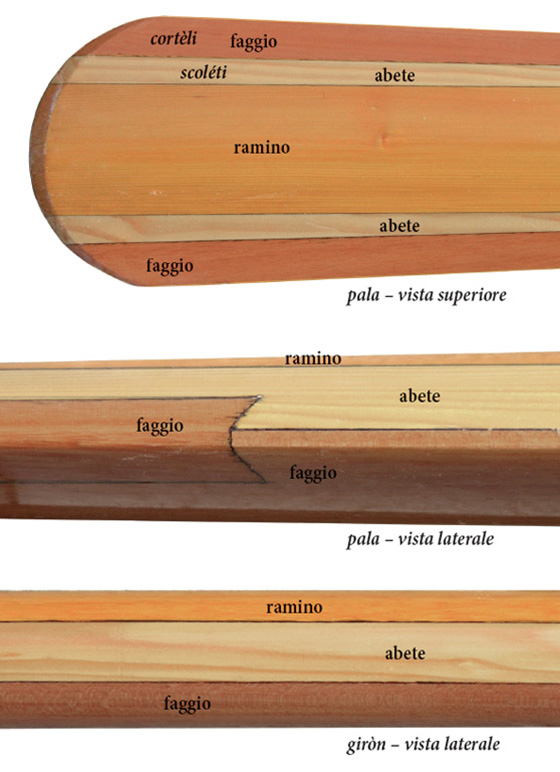Venetian Oars

The oars used in Venetian rowing have a fairly simple form but they must have certain characteristics and precise details to optimise this unique style of rowing. The central shaft in ramin is made of a long cylinder (man e giròn) inserted into the trapezoidal blade with two lateral trims in beech (corteli). The shaft is not a perfect cylinder but has an oval section that tapers to form the handle of the oar. The blade is asymmetrical: the top side has an edge (spina), angled towards the stern, which strengthens the blade and helps to maintain the direction of the stroke of the oar; the bottom side of the blade is rounded. The edge at the extremity of the blade must have a perfect curvature to ‘cut’ the water efficiently, while the blade as a whole has a slight spoon-like curvature when viewed from the side.
The asymmetry of the blade defines which side of the boat the oar is used on: remi popieri are oars used on the starboard side while remi provieri are used on the port side.
The length and diameter of the oar depend on the rowing position of the oarsman in the specific type of boat: from light, 3-metre long oars for rowing alla valesana (two oars rowed by a single oarsman), to the ‘heavy- duty’ oars used at the stern of the caorlina.